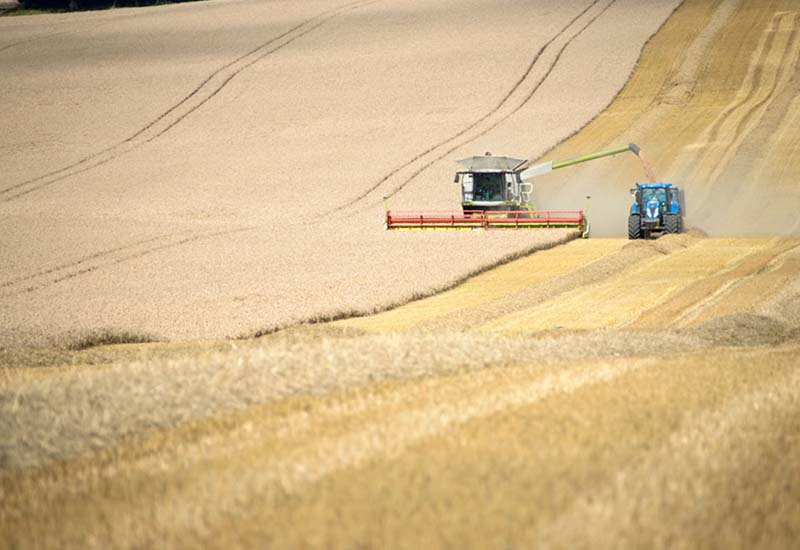All change in the countryside
Farming in the UK is changing faster than anyone realises. There will be winners – and losers…
The UK farming industry is facing a period of radical change that most farmers are underestimating both in extent and speed. There will be winners and losers, with the split between the two largely determined by how quickly individual farmers can adapt. The changes in the farming industry will themselves have profound impacts on the environment.
What are the main catalysts of change, and how can farmers best embrace the opportunities that will arise?
Some adaption strategies can be implemented gradually while others will require urgent action. The good news is that central government can assist with grants – and in some cases there will be scope for private investment capital.
Successful farmers will need to be wholly open to ideas, invest time to investigate the options, and change elements of their lifestyle to succeed through this period of unprecedented change.
The UK’s exit from the EU
Assuming the UK exits the European Union (either by way of a no deal or after a two-year transition period), farming support from Europe in the form of Common Agricultural Policy (CAP) grants will end at some point – potentially very soon.
The UK’s Department for Environment, Food and Rural Affairs (DEFRA) will then determine how farming is supported rather than Brussels. The Rural Payments Agency (RPA) that currently administers the application, assessment and payment processes for DEFRA will be paying out money directly from the Treasury. One upside to farmers of the change will be the removal of exchange rate exposure, as RPA grants are currently calculated in euros and converted to pounds for payment. While the sums involved – around £2 billion per annum – appear modest, these grants are often the difference between absolute annual losses and the most modest of surpluses. The average grant is just under £20,000 per annum.
DEFRA’s current secretary of state, the Rt Hon Michael Gove MP, has stated that while the pool of grant money hitherto received from the EU will be maintained by the Treasury after Brexit, he wants DEFRA to grasp a generational opportunity to restructure the way grants are awarded. It has long been recognised that the way CAP grants are awarded does not recognise the idiosyncrasies of British farming’s practices. The fact that the majority of British farmers voted to leave the EU in the 2016 referendum shows that they were keen for change.
Gove has said that public money should be used for public benefit and intends to use RPA payments to achieve environmental enhancements – even hinting that the blanket support of CAP payments will be realigned to promote farming that supports biodiversity and the fight against climate change.
While fuller details are needed, it seems clear that big, successful farmers will see a reduction or perhaps an elimination of grants altogether. Smaller farmers, however, may receive more support – but only if they can demonstrate public benefits, such as strong green credentials in perhaps the form of biodiversity programmes, carbon capture initiatives or green energy production.
One central conclusion to emerge from these changes is that smaller, less profitable, marginal farms that cannot demonstrate public benefit in the form of environmental enhancements should be very worried.
25-year environmental plan
DEFRA released its 25-year environmental plan in early 2018. The following of its aims are going to disproportionately impact farming:
- reducing the damaging abstraction of water from rivers and groundwater
- increasing woodland in England to 12% cover by 2060
- improving soil management so that by 2030 all of England’s soils are managed sustainably using natural capital thinking to develop appropriate soil metrics and management approaches
- ensuring that food is produced sustainably and profitably.
It seems clear that financial support for farming is going to be allocated in ways that support the aims of this 25-year plan – something that would have been impossible under the CAP.
Changes in consumer demands
Consumer demand is changing more rapidly than ever, accelerated by a more open society, social media and a realisation that the production of different foods have a very varied impact on the environment. Add to the high-octane mix various health and lifestyle factors and change is not easy to over-estimate. For example, these facts about veganism are remarkable:
- increased by 360% in Great Britain over the last decade
- the global meat-alternative market will reach $5.2bn by 2020
- the global non-dairy milk market is predicted to reach nearly $11bn by the end of 2019
- vegan products grew by 92% in Australia last year
- UK plant-based foods sales are up 1,500% in 2018.
Small changes in demand for meat have a large impact on the countryside and its environment, as just under 40% of global land surface is used for livestock farming. Reducing demand for meat is going to free up vast tracts of land. This will affect the value of land as supply increases – investors and lenders take note.
Beef farmers, especially those producing lower-quality meats, take urgent note.
Options for farmers
While many farmers have diversified their traditional forms of income (for instance, with farm shops), others have fewer options, especially if their locations are more remote. Such farms must focus on what ‘public benefits’ they can offer, and where they can take advantage of the changes to a more sustainable economy rapidly moving from fossil fuels. Three key opportunities emerge:
- Wind power
The UK is one of the best locations for wind power in the world. Wind power contributed 18.5% of UK power generation in the final quarter of 2017. In 2016, the UK generated more electricity from wind power than from coal. Scotland has the most appropriate wind-sure sites although planning is becoming more difficult.
2. Solar
Farmers and growers already host over 1,200 solar farms that represents about 70% of UK solar power. There is demand from investment capital in these facilities and farmers should consider harvesting energy.
3. Anaerobic digestion
Anaerobic digestion is the controlled breakdown of organic material in a closed ‘digester’ vessel. Anaerobic means ‘without air’, as opposed to composting. After 20 to 60 days, depending on the configuration and internal temperature of the digester, a methane-rich ‘biogas’ is produced. This gas is used for electricity and heat generation. Material suitable for the process includes:
- animal manure and slurry
- energy crops such as maize or ryegrass silage and fodder beet
- food processing by-products
- food waste from retailers
- biodegradable household waste.





